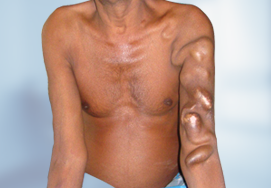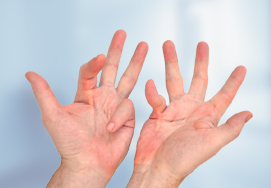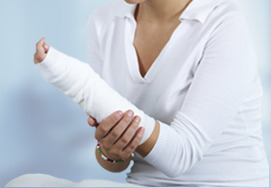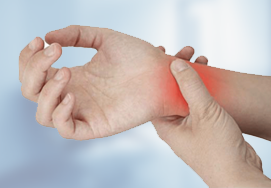Crush Injuries Of The Hand
Liposuction, also known as lipoplasty, slims and reshapes specific areas of the body by removing excess fat deposits, improving your body contours and proportion, and ultimately, enhancing your self-image.

- What are crush injuries?
- Why hand crush injuries are important
- What are the treatment options for the crush injuries of the hand?
- How should I prepare for the surgery?
- What is the aftercare of the surgery?
- What are the post-surgical considerations?
What are crush injuries?
A crush injury is caused when a part of your body is trapped between two objects, which compress and squeezes it with great force. Depending on the force or pressure causing injury there are varying degrees of crush injuries such as simple injuries such as slamming a finger in a door to severe, life-threatening injuries such as hands being trapped and crushed during auto accidents or natural disasters.
Crush injuries are also common during falls and may result in broken bones, severe bruising, bleeding, lacerations, and compartment syndrome.
Crush injuries sometimes make the diagnosis complicated as they leave few external wounds, and damage the internal tissues, but your doctor may identify the crush injuries with fractured or dislocated bone, lacerations, contusions, compartment syndrome, skin deformity, and damage to the nerves, muscles, and tendons.
Why hand crush injuries are important
Hands are invaluable for our daily work, activities , recreation and aesthetic appeal. Crush injuries to the hand can be devastating injuries and it is important that one understands the importance of reaching the right plastic surgeon or hand surgeon so that form and function of the hand can be restored as much as possible. It is important to recognize that hand is a complex organ and has fine functions which require extreme precision is treatment so that function returns. Injuries if mismanaged in first instance will lead to permanent disability or deformity.
Never neglect hand injuries.
What are the treatment options for the crush injuries of the hand?
Your hand surgeon will closely assess the injury and decide upon the treatment strategy depending on the extent of deformity of the upper limb.
Minor injuries such as a finger in a door or dropping something on the finger sometimes may not require any medical attention. Simple cleaning of the wound in case of bleeding to avoid infection and applying ice to relieve pain would help in the management of the minor crush injuries.
Moderate injuries with considerable swelling and limited or no mobility in the affected extremity require medical attention and diagnostic assessments to determine if there is a fracture as it may lead to compartment syndrome.
Serious injuries with moderate to heavy bleeding and with compartment syndrome are already set may require medical attention with antibiotics and tetanus shot followed by immediate surgery to eliminate the pressure on the nerves and muscles. Prolonged unattended compartment syndrome may lead to amputation of the affected area.
Surgery (most likely a fasciotomy) is performed when a severe crush injury results in inevitable compartmental syndrome. The compartmental syndrome is visually identified with the appearance of swollen skin with a shiny appearance. You may experience extreme pain as the first sign, followed by tingling sensation due to nerve damage which leads to paralysis of the upper limb. Once the paralysis has set in, the pulse will disappear in the affected upper limb.
How should I prepare for the surgery?
A quick anesthesia work up, including several blood tests, would be done to ensure minimum risk. A radiological examination of the affected area is needed to determine the extent of the injury. Fasciotomy is usually performed in an emergency condition. So, you may not require any preparation for the surgery.
Surgery for crush injuries may require several surgeries
Surgeries to restore hand function in a crush injury may require several surgeries which require to be timed and done with precision to restore hand function. Unlike typical general surgeries like appendicectomy, cholecystectomy, hernia repair, tumor removal etc., these surgeries require to be staged depending upon the extent of injury and reconstruction required.
Hand function restoration goes a long way to rehabilitate an individual with crush injury..
What is the aftercare of the surgery?
Your affected extremity will be elevated 24 to 48 hours after the surgery which will help to decrease swelling and pain.
Follow the instructions carefully for better recovery:
- Take the prescribed medications on time. Your doctor may prescribe antibiotics to reduce the risk of infection.
- Avoid smoking and alcohol as they can cause tissue damage and prolong the recovery.
- Do not forget to follow the stretching and strengthening exercises suggested by your physiotherapist.
- Take a diet rich in glucose or fructose; that help in decreasing the pain and fatigue associated with the surgery.
What are the post-surgical considerations?
Soon after the surgery, you may experience mild to moderate pain at the surgical site. Do not worry, take the medications on time.
Development of blood clots is the common surgical complication. Other complications include skin sloughing, infection, muscle weakness or damage, nerve or blood vessel injury, and scarring.
Call your surgeon immediately if,
- There is a severe pain at the surgical site and does not relieve with analgesics.
- The skin near the injured area turns blue and if you feel cold and numb
- There is swelling in the injured area or becomes hard
- You have trouble moving the injured extremity














